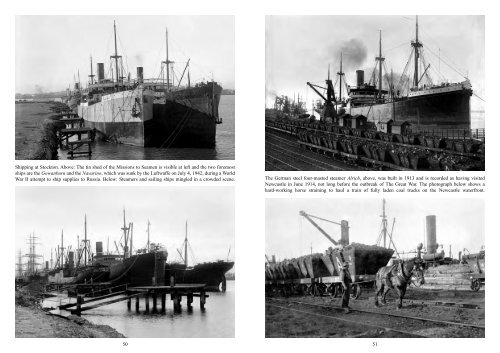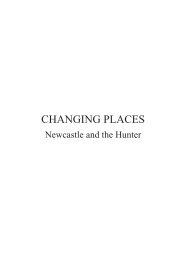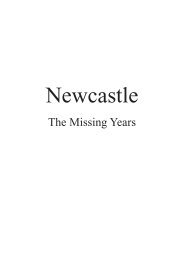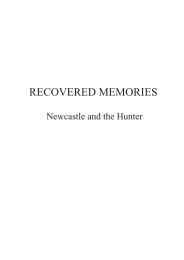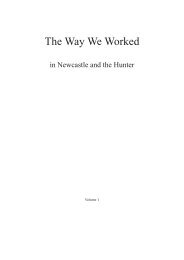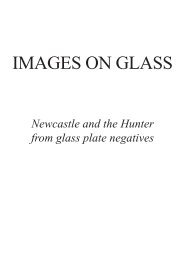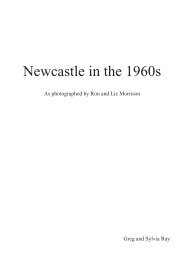Create successful ePaper yourself
Turn your PDF publications into a flip-book with our unique Google optimized e-Paper software.
Shipp<strong>in</strong>g at Stockton. Above: The t<strong>in</strong> shed of <strong>the</strong> Missions to Seamen is visible at left <strong>and</strong> <strong>the</strong> two foremost<br />
ships are <strong>the</strong> Gowanburn <strong>and</strong> <strong>the</strong> Navar<strong>in</strong>o, which was sunk <strong>by</strong> <strong>the</strong> Luftwaffe on July 4, 1942, dur<strong>in</strong>g a World<br />
War II attempt to ship supplies to Russia. Below: Steamers <strong>and</strong> sail<strong>in</strong>g ships m<strong>in</strong>gled <strong>in</strong> a crowded scene.<br />
The German steel four-masted steamer Alrich, above, was built <strong>in</strong> 1913 <strong>and</strong> is recorded as hav<strong>in</strong>g visited<br />
<strong>Newcastle</strong> <strong>in</strong> June 1914, not long before <strong>the</strong> outbreak of The Great War. The photograph below shows a<br />
hard-work<strong>in</strong>g horse stra<strong>in</strong><strong>in</strong>g to haul a tra<strong>in</strong> of fully laden coal trucks on <strong>the</strong> <strong>Newcastle</strong> waterfront.<br />
50 51


